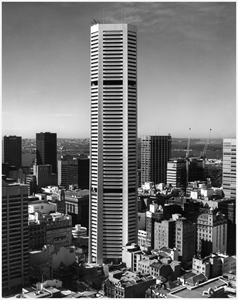The average HVAC system, according to the Energy Efficiency Exchange, accounts for 40 per cent of a building’s total electricity consumption. When the equipment isn’t operating up to standard, it can waste a considerable amount of energy, increasing costs as a result.
That’s why HVAC technicians must measure pressure and airflow to ensure everything is in working order. Pressure fluctuations can impact a system’s performance, and multiple factors may cause pressure to be either excessively high, low or erratic. Here are four variables that affect HVAC pressure:
Positive pressure can force conditioned air out of the building.
1. Outside pressure
Although it doesn’t seem likely, air pressure from outside of a building can impact the structure’s HVAC system. Specifically, when a facility’s pressure is negative, the equipment can pull in exorbitant amounts of unconditioned air. In contrast, positive pressure can force conditioned air out of the building.
There is a way HVAC technicians can take advantage of this relationship. For example, during the summer, managers can set the pressure at around 25 Pascals, However, professionals shouldn’t ignore how certain facilities use natural ventilation to create adequate temperatures.
2. Leaky ducts
According to Building Green, small fractures or leaks in an HVAC solution’s ductwork can cause pressure to build up in some areas and decrease in other sections. This creates uneven airflow, and can be particularly detrimental to efficiency.
To detect leaks, technicians should use pressure measurement instruments capable of identifying irregularities. If builders recently renovated a particular part of a facility, it may be helpful to check ductwork near those areas to ensure contractors didn’t accidentally damage it.
#HVAC system is placed under continuous negative pressure to prevent spread of contaminants.h…/buff.ly/1TVSXSf pic.twitter.com/8n2HM92S3W
— 1800 HVAC (@hvac_new_jersey) August 22, 2015
3. Fan settings
The balance between relief and intake airflow is another factor that dictates whether or not a structure’s internal pressure will be positive or negative. As noted earlier, if the inflow vents absorb more air than a building expels, the HVAC system will create a net positive pressure. This may be desirable, depending on the season.
4. Wind
Closely tied to the first factor, wind can push outdoor air onto one side and pull indoor air from the leeward direction. The pressure problems this variable introduces depends on outdoor air density, building height and nearby obstructions such as trees and other structures.
To mitigate the detrimental effects of high winds, facility managers should consider maintaining negative building pressure. With low winds, decision makers should do the opposite.
Overall, regularly checking system pressures is advisable. Speak with one of testo’s experts to learn which pressure measurement instrument is the best choice for you.









 Reduce cooking oil costs while ensuring quality
Reduce cooking oil costs while ensuring quality Expert knowledge on CO2 monitoring
Expert knowledge on CO2 monitoring Refrigeration knowledge - in 3 modules
Refrigeration knowledge - in 3 modules



